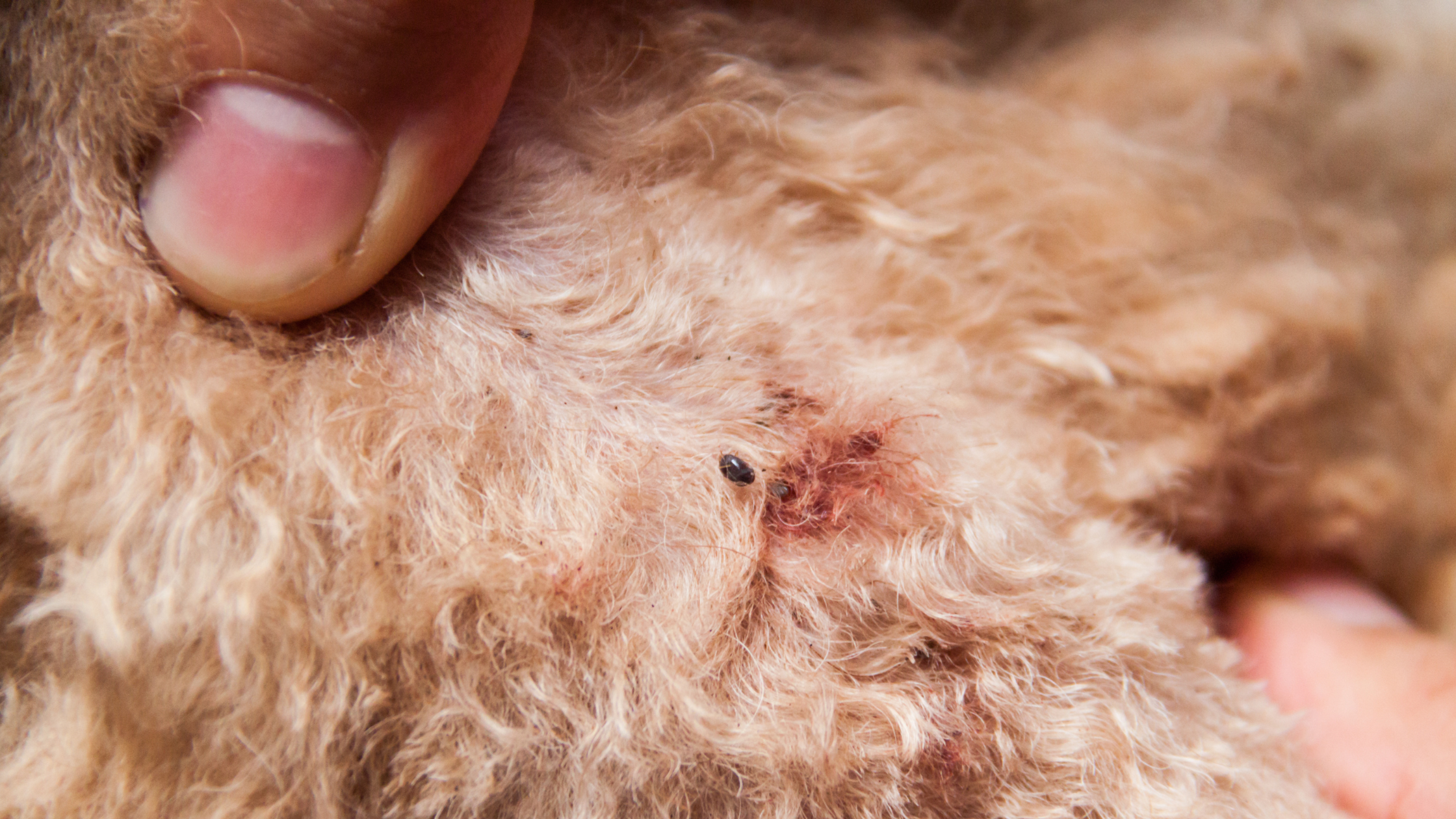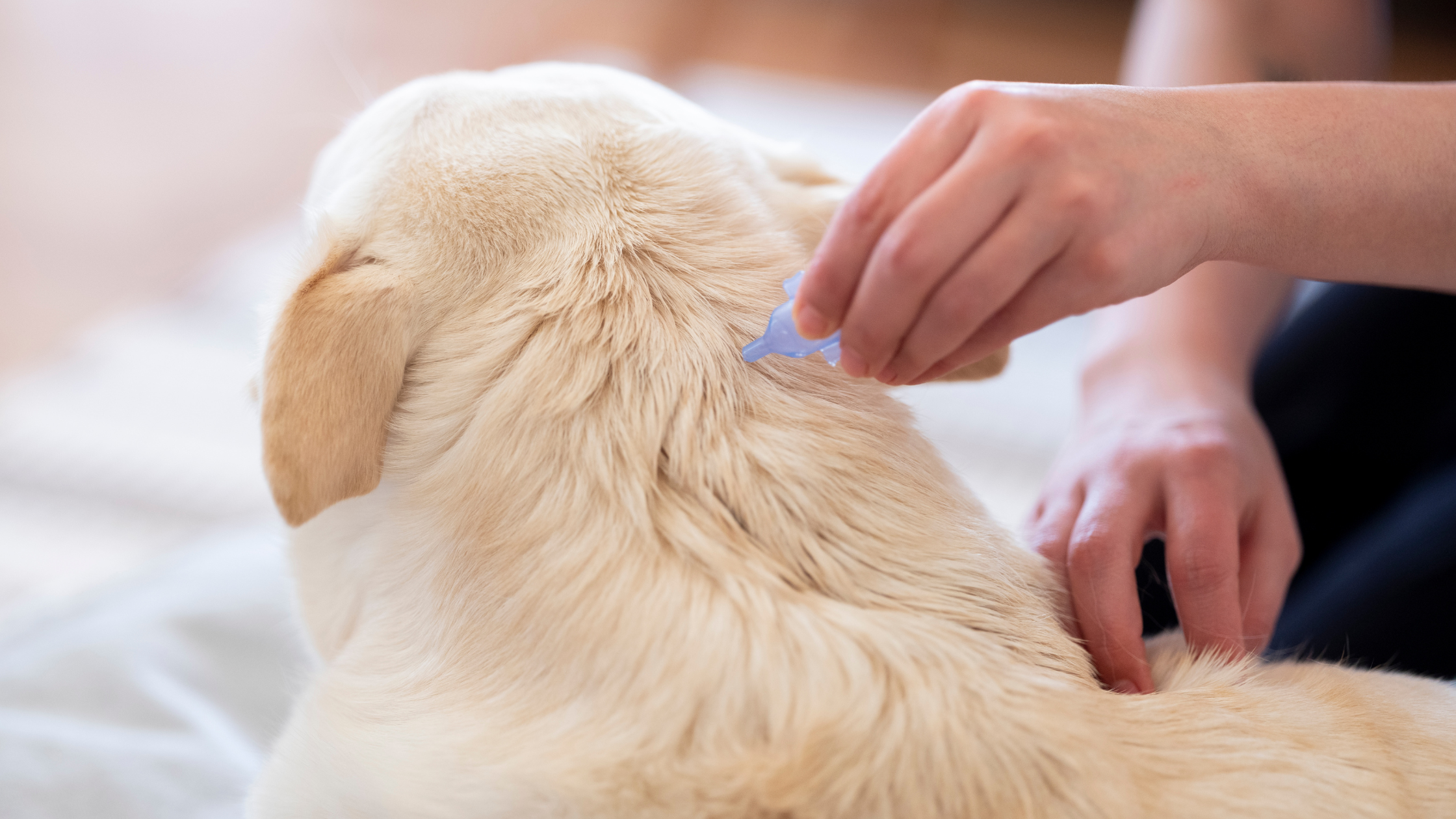Dog fleas are a common problem faced by many pet owners. These small, blood-sucking parasites can cause not only itching and discomfort for your pet, but also more serious health problems and diseases.
Dog fleas are highly mobile – they can quickly move from one animal to another, as well as spread throughout your home, where they can survive for a long time. Therefore, in order to protect your pet and your home, it is essential to know how to identify dog fleas, how to eliminate them, and what preventive measures to take.
Table of contents
How do dogs get fleas?
Dogs usually become infected with fleas through contact with other infected animals or by being in a contaminated environment. Flea larvae and eggs can be found in grass, sand, carpets, beds, or even car seats.
If your dog frequently visits public places such as parks or kennels, the likelihood of becoming infected with fleas increases significantly.
In addition, fleas can be brought into your home on your clothing or shoes. Even if your dog does not go outside, it can still become infected, as flea eggs can be brought in from the environment.
This means that every dog owner should be vigilant and regularly check their pet’s coat and use antiparasitic products.

Dog fleas and gastrointestinal parasites
Dog fleas not only cause itching and skin irritation, but can also transmit dangerous dog worms —parasites of the digestive tract, such as tapeworms (Dipylidium caninum).
A dog can become infected with parasites by accidentally swallowing an infected flea while scratching or licking its coat. Therefore, when combating fleas in dogs, it is important not only to use external antiparasitic preparations, but also to give additional medication for gastrointestinal parasites.
Regular deworming helps protect your dog’s health and prevent possible infections. It is recommended to consult your veterinarian for the most appropriate measures.
How to tell if your dog has fleas?
If you notice that your dog is constantly scratching, chewing on certain parts of its body, or becoming irritable, these may be the first signs of fleas. Other signs that your dog may have fleas include:
- Skin redness and irritation – flea bites cause itching, and the dog may damage the skin by scratching.
- Bald patches – intense scratching and chewing can cause hair loss.
- Small black or brown specks – these may be flea droppings, which can be seen on the dog’s coat or bedding.
- Direct sighting of fleas – by carefully examining the dog’s coat, you may find small black or brown fleas moving around.
If you notice any of these symptoms, it is recommended that you do not delay and contact your veterinarian, who can help determine whether your dog really has fleas and what measures should be taken to eliminate them.

How to eliminate fleas on your dog and in your home?
If your pet has fleas, it is important not only to treat the dog, but also to eliminate fleas from the entire environment to prevent re-infestation.
Flea control on dogs
First of all, fleas on dogs should be eliminated using special flea control products such as drops, sprays, tablets, and/or antiparasitic shampoos.
It is recommended to consult with a veterinarian to choose the most appropriate treatment and prevention for your pet. Effective flea control in dogs requires the selection of appropriate measures.
What is the most effective way to eliminate fleas in dogs? Practice shows that a comprehensive approach yields the best results. Veterinary specialists recommend combining several products to ensure maximum effectiveness. Flea control in dogs should be regular, especially during the warmer months.
Flea extermination at home
However, it is important to understand that treating your dog alone will not solve the flea problem. Flea eggs and larvae can spread throughout your home and other areas where your pet spends time, such as the yard or car, so it is necessary to thoroughly clean your living environment.
To eliminate fleas on your dog and in your home, it is recommended to vacuum carpets regularly, wash your dog’s bed at a high temperature, and use special insecticide sprays and products that kill both adult fleas and their larvae.

Dog flea prevention: how to protect your pet?
To prevent fleas from becoming a recurring problem, it is important to take preventive measures. Your veterinary clinic can offer various flea prevention methods, such as:
- Antiparasitic collars
- Drops on the neck
- Flea tablets
- Other long-acting products
These products are used to eliminate fleas in the environment. It is also recommended to regularly clean your home and your dog’s bedding to reduce the risk of fleas spreading.

Do dog fleas bite humans?
The answer is yes, dog fleas bite humans, but they cannot live on human skin for long. However, if the dog flea population in your home has grown, they can bite their owners and cause unpleasant itching and skin irritation.
Therefore, it is very important not only to eliminate fleas from your dog, but also to properly care for, clean, and disinfect your entire home environment.
It is important to take action as soon as possible to prevent these parasitic creatures from spreading and causing additional problems for the whole family. Dog fleas bite humans and can be particularly unpleasant if there are allergic people or children in the home.
When should you contact a veterinary clinic about fleas on your dog?
If you notice that your dog has fleas or shows symptoms caused by them, a veterinarian can help determine the extent of the problem and prescribe the most appropriate treatment.
The Begemotas Veterinary Clinic offers professional consultations and effective solutions for combating fleas in dogs.
Don’t delay – make an appointment at the Begemotas veterinary clinic and get expert advice on how to protect your pet and yourself from fleas!





